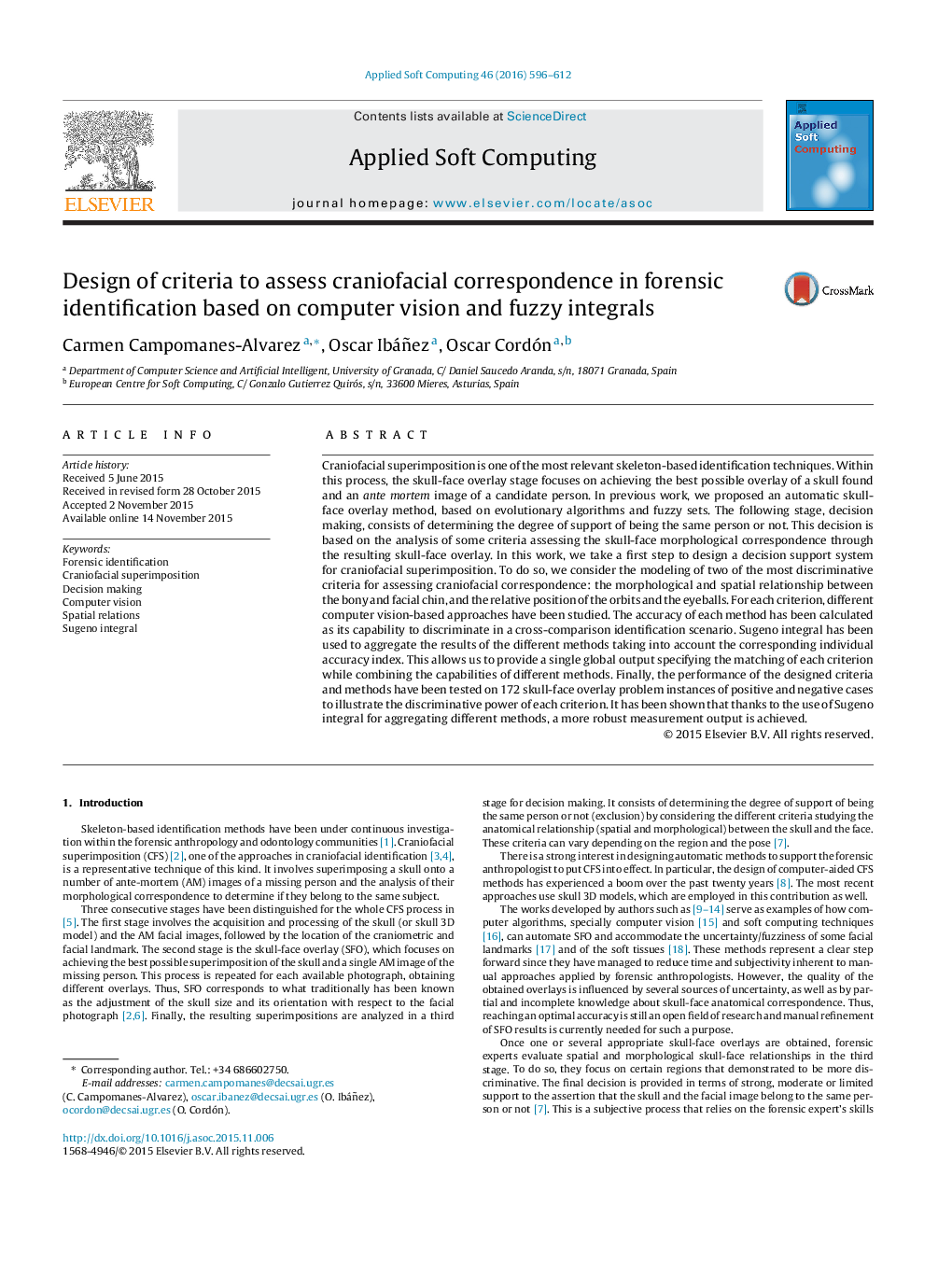| Article ID | Journal | Published Year | Pages | File Type |
|---|---|---|---|---|
| 494695 | Applied Soft Computing | 2016 | 17 Pages |
Craniofacial superimposition is one of the most relevant skeleton-based identification techniques. Within this process, the skull-face overlay stage focuses on achieving the best possible overlay of a skull found and an ante mortem image of a candidate person. In previous work, we proposed an automatic skull-face overlay method, based on evolutionary algorithms and fuzzy sets. The following stage, decision making, consists of determining the degree of support of being the same person or not. This decision is based on the analysis of some criteria assessing the skull-face morphological correspondence through the resulting skull-face overlay. In this work, we take a first step to design a decision support system for craniofacial superimposition. To do so, we consider the modeling of two of the most discriminative criteria for assessing craniofacial correspondence: the morphological and spatial relationship between the bony and facial chin, and the relative position of the orbits and the eyeballs. For each criterion, different computer vision-based approaches have been studied. The accuracy of each method has been calculated as its capability to discriminate in a cross-comparison identification scenario. Sugeno integral has been used to aggregate the results of the different methods taking into account the corresponding individual accuracy index. This allows us to provide a single global output specifying the matching of each criterion while combining the capabilities of different methods. Finally, the performance of the designed criteria and methods have been tested on 172 skull-face overlay problem instances of positive and negative cases to illustrate the discriminative power of each criterion. It has been shown that thanks to the use of Sugeno integral for aggregating different methods, a more robust measurement output is achieved.
Graphical abstractFigure optionsDownload full-size imageDownload as PowerPoint slide
